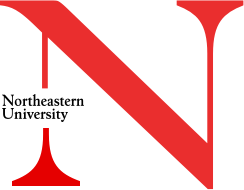Render Course Modules: CS5200
01. DATABASE SYSTEMS
Overview · Objectives · Estimated Time: 9.0 hrs 1.1 • [45 min] READ: The Need for Databases ⏎
Introduces the key features, key concepts, and responsibilities of a
database management system and its context in an organizational
information infrastructure.
- define a database and a database management system
- list limitations of file-based repository structures
- understand where database are often used
- cite popular database management systems
- distinguish between different database architectures and types
- sketch the architecture of client/server and n-tier databases
- list the phases of database design and implementation
1.1 • [45 min] READ: The Need for Databases ⏎ Provides an overview of databases and explains why database management systems (DBMS) are an essential part of every modern organization. Lists the key responsibilities of a DBMS. Explains benefits and challenges of modern relational and non- relational databases as well as common roles and architectures.
02. PROGRAMMING IN R
Overview · Objectives · Estimated Time: 7.0 hrs
Introduces the R programming language.
- write programs in R
- manage projects in R Studio (posit)
- process data, dataframes, and files
2.1 • [60] FOLLOW: Beginning R ⏎
2.2 • [45] FOLLOW: Working with R Projects ⏎
2.3 • [45] FOLLOW: R Scripts and Programs ⏎
2.4 • [60] FOLLOW: Quick Guide to R For Programmers ⏎
2.5 • [20] FOLLOW: Console Output in R ⏎
2.6 • [60] FOLLOW: Writing Functions in R ⏎
2.7 • [90 min] DO: Getting to Know R ⏎
03. FILE-BASED DATA REPOSITORIES
Overview · Objectives · Estimated Time: 7.0 hrs 3.3 • [6 hrs] DO: Build Hierarchical Document Database ⏎
Explains the use of the file system as a hierachical data
repository.
- understand files and the file system
- use R to access and manage files and folders
- build file-based data repositories
3.1 • [45] FOLLOW: Navigating the File System in R ⏎
3.2 • [45] FOLLOW: Basics of Text & String Processing in R ⏎
3.3 • [6 hrs] DO: Build Hierarchical Document Database ⏎ Most operating systems use a hierarchical file system for storing documents, images, media, programs, and any other type of data in files. The file system can act as a database and is often used to store large file objects, often in conjunction with a database (such as a relational database). In this assignment, you will experiment with navigating the file system in R and implement a simple query structure for a hierarchical document object data store. Level: intermediate
Level: intermediate
